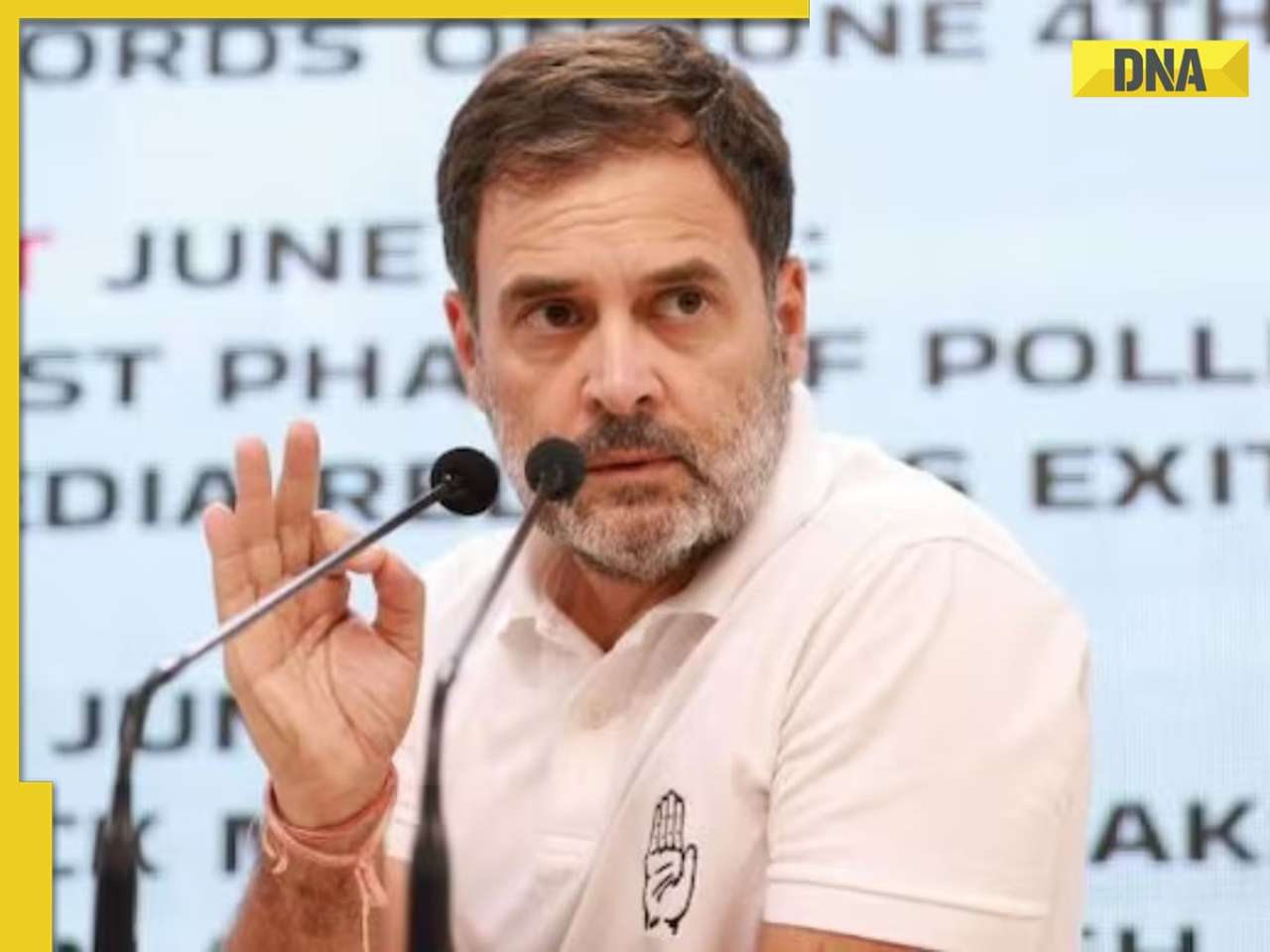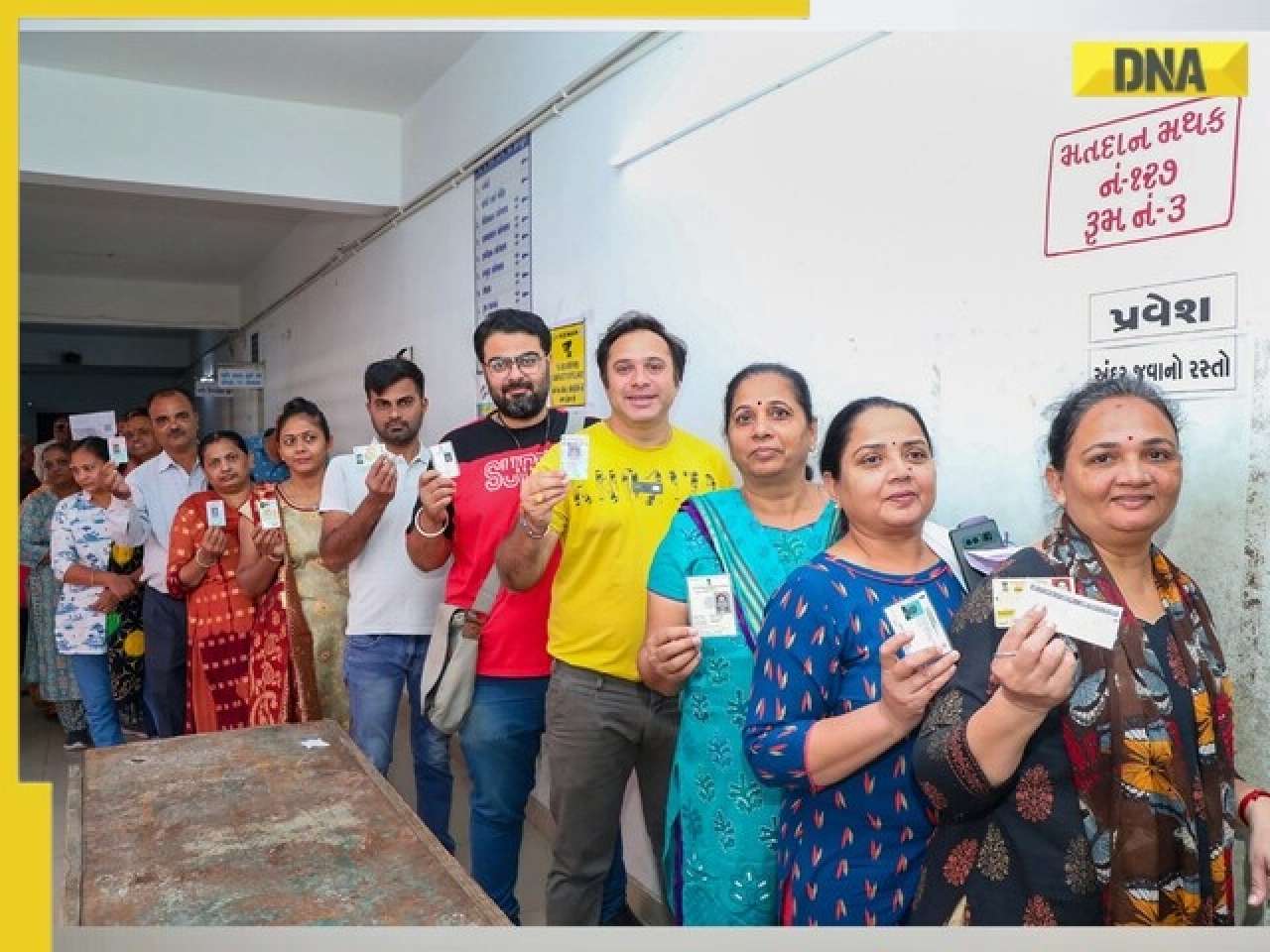A key development is the rising interest among manufacturers to make viable electric cars for the masses.
With India’s biggest auto show, the Auto Expo, starting in Delhi on Tuesday barely a month after the Copenhagen summit on
climate change, a key development is the rising interest among manufacturers to make viable electric cars for the masses.
Meet Kenneth Andrade, finance professional and owner of a bright red Reva i. Andrade bought his electric car three years back for Rs5 lakh and uses it to commute to work. “I travel daily from Kalina to Fort and back (a round trip of 48km) in my Reva and all I spend is Rs1,000 a month on my electricity bill,” he beams. “I really like driving around in it too because it is an extremely simple car to handle, besides being easy to park.”
But people like Andrade are a rarity because development of electric cars has for years been on the fringes of the auto industry. All that may change faster than we imagine in the new decade as pressure builds up to reduce carbon emissions to save our climate.
GOVERNMENT INCENTIVES
Already, anticipating a less tolerant atmosphere in the future for cars burning fossil fuel, governments have begun to take proactive measures to promote electric cars. The Chinese government, for instance, offers subsidies of up to $8,800 to taxi fleets and local government agencies in 13 cities for each hybrid or all-electric vehicle they purchase. Little wonder that China currently has the largest population of electric vehicles.
European governments too are discouraging fossil fuel cars and encouraging people to switch to electric cars. The Danish government offers a $40,000 tax break on each new electric car and free parking in downtown Copenhagen. London has imposed a weekday ‘congestion charge’ which is a tax that cars have to shell out to drive into London’s Congestion Charge Zone between 6.30am and 7.00pm. Electric and hybrid cars are exempted from this tax.
In India, the National Capital Region of Delhi now offers a 15 per cent subsidy on the purchase of any battery-operated vehicle, exemption of VAT up to 12.5 per cent and exemption from payment of road tax and registration charges. But that’s just a start. “There is a need for a uniform green policy across all states, which will encourage the adoption of alternative energy and clean technology,” says Chetan Maini, Chief Technology Officer, REVA Electric Car Company.
COST AND POWER
The small Bangalore-based auto company has in fact been a pioneer in this area. But with sales of only about 3,000 cars in India and abroad so far, the Reva experience also shows why electric cars have had few takers.
Despite being at the lowest end of the electric car spectrum, the Reva’s cost is more than one-and-a-half times that of a Maruti 800. That’s a lot to pay for a tiny car with a top speed of 60 kmph. But an even bigger deterrent is the battery.
Ask Andrade. He says that after the first 10,000 km the capacity of his Reva battery dropped significantly. “Earlier I got around 65-70km, sometimes even 80km on a single charge, but now in the car’s third year, I get around 45-50km.”. What’s worse, just last month, the battery packed up entirely and had to be replaced, which led to the discovery that “the damn thing costs a Nano”.
But this is a scenario which can change quickly with a combination of government incentives and new technologies. According to Rakesh Batra, partner and national automotive leader, Ernst & Young, “there’s plenty of investment happening on the electric car front, and a key focus area is the development of lighter and cheaper batteries.”
NEW, NEW CARS
With tough regulations and punitive taxes on fossil fuels almost a certainty, auto companies are also gearing up to launch a range of superior electric cars. Hyundai will unveil an all-electric version of its i10 at the Auto Expo starting in Delhi on Tuesday. GM too will display the Chevy Volt hybrid as well as an electric version of Spark, which it is developing with technology from Reva.
Reva itself is coming out with two new models with which it hopes to get into the mainstream. The Reva NXG (Next Generation), a two-seater that goes into production in 2011, will have a top speed of 130 kmph and a range of 200km. And the Reva NXR (Next Revolution) will be a four-seater that can go up to 100 kmph.
But the real game changers are the global auto majors which are set to come out with a new generation of electric cars that will have sufficient power and range, as well as the right pricing for the mass market. While Nissan has already launched the all-electric Leaf, Toyota is expected to come out with an all-electric version of its successful hybrid Prius this year. Among Indian companies, the ones to watch out for are Mahindra, which has a four-seater electric car on the anvil, and Tata Motors which has promised an E-Nano and an electric Indica Vista.
According to Frost and Sullivan estimates, the global electric vehicle market is set to grow up to 1.2 million by 2015. A key driver will be government intervention, such as the Obama administration’s $2.4 billion plan to boost the development of a new generation of electric vehicles.
CHARGING STATIONS
But it will take a lot more than new technology to persuade consumers to switch to electric cars. Right now they can only charge these cars at home or the office, which is a major constraint. “I live on the fourth floor and I have a 15 amp plug-point in my parking lot where I plug in my Reva every day. What I have done is taken a permanent line directly from my meter box,” says Andrade, who adds “I do have covered parking though”.
GM, which is developing electric vehicles for the Indian market in collaboration with Reva, is hoping for better support systems than that. “We’ll be working with the Indian government to develop infrastructure for electric vehicle charging and also offer financial benefits to those who adopt an environment-friendly mode of personal transport,” said Karl Slym, Managing Director, GM India.
In Denmark, for instance, charging poles and service stations that can top up electric car batteries in minutes are being rolled out throughout the country. But there are unresolved issues. For example, charging stations may need to stock up on different types of batteries if different carmakers come up with their own battery versions. A standard battery, therefore, can help matters a great deal.
There are other complications as well. Unless clean energy is used to produce the electricity that powers these cars, it will only be a case of shifting carbon emissions from one point to another. To cut emissions, the progress in electric cars will have to be matched by progress in alternative energy sources and the reduction of emissions from coal-fired power plants.
![submenu-img]() Swara Bhasker reacts to Kangana Ranaut slap incident, says actress-politician used Twitter to 'justify violence'
Swara Bhasker reacts to Kangana Ranaut slap incident, says actress-politician used Twitter to 'justify violence'![submenu-img]() Wayanad or Raebareli? Congress Leader Rahul Gandhi likely to decide on Monday
Wayanad or Raebareli? Congress Leader Rahul Gandhi likely to decide on Monday![submenu-img]() PM Modi to flag off 2 new Vande Bharat trains on this date, check route, timetable, and other details
PM Modi to flag off 2 new Vande Bharat trains on this date, check route, timetable, and other details![submenu-img]() Manipur: Major fire breaks out in abandoned building near CM Biren Singh's residence
Manipur: Major fire breaks out in abandoned building near CM Biren Singh's residence![submenu-img]() Fixed deposits: Which bank is offering highest FD interest rates post RBI's new guidelines?
Fixed deposits: Which bank is offering highest FD interest rates post RBI's new guidelines?![submenu-img]() Meet MIT graduate who secured 42nd rank in UPSC, is now suspended due to..
Meet MIT graduate who secured 42nd rank in UPSC, is now suspended due to..![submenu-img]() Railway Recruitment 2024: Sarkari Naukri alert for 1104 posts, check eligibility and selection process
Railway Recruitment 2024: Sarkari Naukri alert for 1104 posts, check eligibility and selection process![submenu-img]() NEET-UG exam row: 'Transparent process will be...,' assures Education Minister Dharmendra Pradhan to students, parents
NEET-UG exam row: 'Transparent process will be...,' assures Education Minister Dharmendra Pradhan to students, parents![submenu-img]() Meet man, a tailor's son from Latur, who cracked four competitive exams, aims to become...
Meet man, a tailor's son from Latur, who cracked four competitive exams, aims to become...![submenu-img]() Meet woman who was once a sweeper, single mother, cleared civil services exam to become SDM, now arrested due to...
Meet woman who was once a sweeper, single mother, cleared civil services exam to become SDM, now arrested due to...![submenu-img]() DNA Verified: Did Kangana Ranaut party with gangster Abu Salem? Actress reveals who's with her in viral photo
DNA Verified: Did Kangana Ranaut party with gangster Abu Salem? Actress reveals who's with her in viral photo![submenu-img]() DNA Verified: New Delhi Railway Station to be closed for 4 years? Know the truth here
DNA Verified: New Delhi Railway Station to be closed for 4 years? Know the truth here![submenu-img]() DNA Verified: Did RSS chief Mohan Bhagwat praise Congress during Lok Sabha Elections 2024? Know the truth here
DNA Verified: Did RSS chief Mohan Bhagwat praise Congress during Lok Sabha Elections 2024? Know the truth here![submenu-img]() DNA Verified: Is CAA an anti-Muslim law? Centre terms news report as 'misleading'
DNA Verified: Is CAA an anti-Muslim law? Centre terms news report as 'misleading'![submenu-img]() DNA Verified: Lok Sabha Elections 2024 to be held on April 19? Know truth behind viral message
DNA Verified: Lok Sabha Elections 2024 to be held on April 19? Know truth behind viral message![submenu-img]() In pics: Raghubir Yadav, Chandan Roy celebrate success of Panchayat season 3 with TVF founder Arunabh Kumar, cast, crew
In pics: Raghubir Yadav, Chandan Roy celebrate success of Panchayat season 3 with TVF founder Arunabh Kumar, cast, crew![submenu-img]() How Kalki 2898 AD makers dared to dream pan-India with its unique promotional campaign for Prabhas-starrer
How Kalki 2898 AD makers dared to dream pan-India with its unique promotional campaign for Prabhas-starrer![submenu-img]() In pics: Prabhas' robotic car Bujji from Kalki 2898 AD takes over Mumbai streets, fans call it 'India's Batmobile'
In pics: Prabhas' robotic car Bujji from Kalki 2898 AD takes over Mumbai streets, fans call it 'India's Batmobile'![submenu-img]() Streaming This Week: Bade Miyan Chote Miyan, Maidaan, Gullak season 4, latest OTT releases to binge-watch
Streaming This Week: Bade Miyan Chote Miyan, Maidaan, Gullak season 4, latest OTT releases to binge-watch![submenu-img]() Lok Sabha Elections 2024 Result: From Smriti Irani to Mehbooba Mufti, these politicians are trailing in their seats
Lok Sabha Elections 2024 Result: From Smriti Irani to Mehbooba Mufti, these politicians are trailing in their seats![submenu-img]() DNA Explainer: What is Kafala system that is prevalent in gulf countries? Why is it considered extremely brutal?
DNA Explainer: What is Kafala system that is prevalent in gulf countries? Why is it considered extremely brutal? ![submenu-img]() Lok Sabha Elections 2024: What are exit polls? When and how are they conducted?
Lok Sabha Elections 2024: What are exit polls? When and how are they conducted?![submenu-img]() DNA Explainer: Why was Iranian president Ebrahim Raisi seen as possible successor to Ayatollah Khamenei?
DNA Explainer: Why was Iranian president Ebrahim Raisi seen as possible successor to Ayatollah Khamenei?![submenu-img]() DNA Explainer: Why did deceased Iranian President Ebrahim Raisi wear black turban?
DNA Explainer: Why did deceased Iranian President Ebrahim Raisi wear black turban?![submenu-img]() Iran President Ebrahim Raisi's death: Will it impact gold, oil prices and stock markets?
Iran President Ebrahim Raisi's death: Will it impact gold, oil prices and stock markets?![submenu-img]() Swara Bhasker reacts to Kangana Ranaut slap incident, says actress-politician used Twitter to 'justify violence'
Swara Bhasker reacts to Kangana Ranaut slap incident, says actress-politician used Twitter to 'justify violence'![submenu-img]() Shah Rukh Khan took only Re 1 signing amount for this cult film, gave bulk dates to director, later rejected it for..
Shah Rukh Khan took only Re 1 signing amount for this cult film, gave bulk dates to director, later rejected it for..![submenu-img]() Made in Rs 9 crore, this film became blockbuster, was rejected by six actresses, won three National Awards, earned...
Made in Rs 9 crore, this film became blockbuster, was rejected by six actresses, won three National Awards, earned...![submenu-img]() 'Audience ko drama..': Shiv Shakti star Ram Yashvardhan on creative liberties taken in mythological series, films
'Audience ko drama..': Shiv Shakti star Ram Yashvardhan on creative liberties taken in mythological series, films![submenu-img]() Not Parveen Babi, Zeenat, Sharmila, Neetu, only Bollywood actress to attend Amitabh Bachchan-Jaya's wedding was...
Not Parveen Babi, Zeenat, Sharmila, Neetu, only Bollywood actress to attend Amitabh Bachchan-Jaya's wedding was...![submenu-img]() Stolen Titian Renaissance painting found at London bus stop, set to sell for up to..
Stolen Titian Renaissance painting found at London bus stop, set to sell for up to..![submenu-img]() Student fails Physics, Chemistry in class 12th, tops NEET 2024 exam; candidate’s scorecard goes viral
Student fails Physics, Chemistry in class 12th, tops NEET 2024 exam; candidate’s scorecard goes viral![submenu-img]() Watch viral video: Italy's PM Giorgia Meloni posts video with PM Modi with 'Melodi' reference
Watch viral video: Italy's PM Giorgia Meloni posts video with PM Modi with 'Melodi' reference![submenu-img]() Girl shocks internet by eating snake like snack in viral video, watch
Girl shocks internet by eating snake like snack in viral video, watch![submenu-img]() Brave or foolhardy? Woman bathes jaguar with pipe, video goes viral
Brave or foolhardy? Woman bathes jaguar with pipe, video goes viral

























































)
)
)
)
)
)